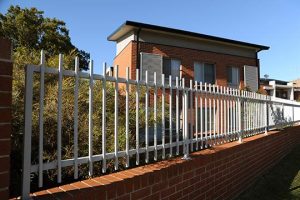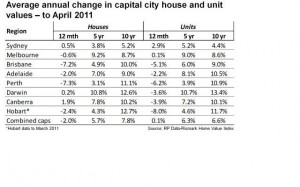Key points:
An owners corporation’s obligation to repair and maintain common property extends to rectifying damage to common property caused by building works carried out by an owner.
However that owner may be liable to indemnify the owners corporation for the cost of those works, and to compensate other lot owners for damage done to their lots, either under the general law of nuisance or as a breach of a duty in section 117 of the Act.
The owners corporation’s statutory powers under section 63 of the Act to undertake works and recover the costs from an owner do not apply in such circumstances unless adjudicator’s orders or orders of the Consumer, Trader and Tenancy Tribunal have first been obtained under the Act for the owner to do the works.
The compensation that a lot owner is entitled to will ordinarily be based on the cost of repairs to their lot, and not repairs to common property affecting their lot, as that common property damage does not directly affect the value of their lot (due to the owners corporation’s obligations to effect the necessary repairs).
The decision in Stolfa v Owners Strata Plan 4366 & ors [2010] NSWSC 1507 (Unreported, Brereton J, 23 December 2010) is the latest in a series of significant judgments in a long-running strata dispute.
In the original Supreme Court judgment of June 2009 (unaffected by an unsuccessful appeal to the Court of Appeal) lot owners John Hempton, Joanna Kalowski and Stephen Hempton (“Hemptons”) were held liable to compensate lot owners Veronica and Raffaele Stolfa (“Stolfas”) for damage done to the Stolfas’ unit by works carried out by or on behalf of the Hemptons to their units. In the present case, the Court sought to determine the extent of that liability, and additionally the impact of the owners corporation’s obligation to repair and maintain the common property.
Lot property damage
The Hemptons were held liable to the Stolfas in respect of damage to the Stolfas’ unit. The Hemptons’ liability in this regard arose from their statutory duty in section 117(1)(a) of the Strata Schemes Management Act 1996 (“Act”) to not use or enjoy their lot, or permit their lot to be used or enjoyed, in such a manner or for such a purpose as to cause a nuisance or hazard to the occupier of another lot (or alternatively under the general law of nuisance).
The Court’s decision in this regard is significant in providing authority that occupiers may have a private cause of action to seek damages or other compensation from lot owners who breach the statutory duty in section 117(1)(a) of the Act.
Common property damage
The Court held that the owners corporation’s obligation to maintain the common property extended to rectifying the damage to common property that was caused by the Hemptons’ works. However, because the damage to the common property was caused by the Hemptons, they were held liable to indemnify the owners corporation in that respect.
Importantly, however, the Court held that the owners corporation’s statutory powers to undertake works and recover compensation from an owner under section 63(4) of the Act did not apply in these circumstances, as on a strict reading of the section, although the Hemptons had a statutory duty under section 117 of the Act, that duty did not require the Hemptons to effect the necessary repairs.
The Court further held that an order of the Supreme Court would not trigger the owners corporation’s power to do the works and recover the costs through section 63(5) (regarding works required to be done by a person under an order), holding that the section related only to an order of a Strata Schemes Adjudicator or the Consumer, Trader and Tenancy Tribunal made under Chapter 5 of the Act.
Instead, the Court held that the Hemptons’ obligation to indemnify the owners corporation arose under the general law of nuisance (the duty in section 117(1)(a) not being relevant as it is owed to occupiers, not the owners corporation).
Damages
The Court awarded the Stolfas compensation based on the cost of repairs to their lot, and additionally alternative accommodation (including parking), removal and storage costs. The Court noted that, if the owners corporation struck a levy to fund the common property repairs, the Stolfas would be liable to contribute according to their unit entitlement. However, as that liability would be incurred due to the Hemptons’ works, the Court held that the Stolfas should be indemnified by the Hemptons in that regard.
However the Court held that the Stolfas were not entitled to direct compensation for the cost of rectifying damage to common property associated with their lot, as the obligation of the owners corporation to effect the necessary repairs meant there was no diminution in the value of the Stolfas’ lot.
Despite this, the Court nevertheless awarded the Stolfas damages for the “risk, vexation, inconvenience and uncertainty” of the enforcement of the obligations of the owners corporation and the Hemptons to respectively do, and pay the costs of, the common property rectification works (in the amount of 10% of the cost of the common property rectification works).
Thanks to Mills Oakley Lawyers for providing this article.

 There are trees to avoid planting and places to avoid planting them. A rubber plant
There are trees to avoid planting and places to avoid planting them. A rubber plant


 In deciding what is a sufficient dividing fence, the court will take into account the following:
In deciding what is a sufficient dividing fence, the court will take into account the following:
